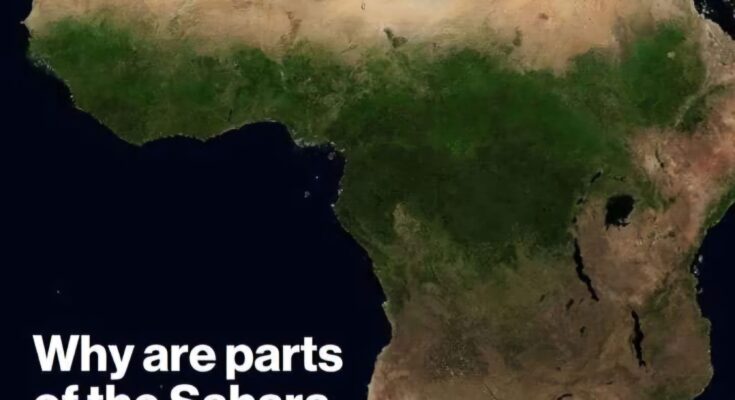
The Sahara Desert Is Starting To Turn Green Thanks to Heavy Rain Fall
The Sahara Desert, one of the hottest and driest places on Earth, is experiencing an unexpected transformation. Recent heavy rainfall has brought a burst of greenery to this typically barren region. Here’s how this remarkable event is unfolding and what it might mean for the future of the desert.
A Rare Event: Heavy Rains in the Sahara

In September 2024, an extratropical cyclone brought a deluge of rain to parts of northwestern Africa, drenching countries like Morocco, Algeria, Tunisia, and Libya. These areas, usually known for their extreme aridity, received far more rainfall than they typically see in a year. NASA’s satellite images have captured pockets of green vegetation sprouting in the desert, a sight that is both rare and astonishing.1
According to Sylwia Trzaska, a climate variability researcher, shrubs and trees are growing in low-lying areas like riverbeds, responding almost immediately to the influx of moisture. It is a brief but remarkable transformation of the desert.
The Return of Greenery

Despite its current harsh conditions, the Sahara Desert wasn’t always a vast, lifeless expanse. Between 11,000 and 5,000 years ago, the region was home to lakes and lush vegetation.2 The recent rains have provided a glimpse of this ancient past, with dormant seeds and plants taking advantage of the moisture. Peter de Menocal, president of the Woods Hole Oceanographic Institution, explained, “When you get these really exceptional rainfall events, the dunes become incredibly verdant and flowered fields”.
Flooding and the Revival of Lakes

Not only have plants flourished in the wake of the rainfall, but lakes that were typically dry have also begun to fill. Moshe Armon from the Hebrew University of Jerusalem noted that areas like Sebkha el Melah, a salt flat in Algeria, have only filled a handful of times in the last two decades. This recent event is one of those rare occurrences, driven by the unusually high rainfall.
The Role of Climate Change

This extraordinary rainfall has been linked to shifts in global weather patterns. A northward movement of the Intertropical Convergence Zone (ITCZ), the tropical rain belt that typically brings rain to equatorial regions, reached farther north than usual. This brought tropical storms into the Sahara desert, resulting in unprecedented rainfall.
Experts suggest that record-high ocean temperatures in the Atlantic are playing a role in pushing the ITCZ northward. However, climate models predict that as the rest of the world’s oceans catch up in temperature, the rain belt will eventually shift back south.
The Impact of Flooding on Communities

While the rainfall has led to an unexpected greening of the desert, it has also caused severe flooding in parts of Africa. More than 1,000 people have died, and around 4 million have been affected by flooding across 14 African nations, including Chad, Nigeria, and Niger. Although much of the rainfall fell in sparsely populated areas, the impact on human lives has been devastating.
A Glimpse of the Past and a Look to the Future

The temporary greening of the Sahara desert is a reminder of its ancient history when it was covered in lush vegetation and filled with lakes. While the current rains are a brief event, they offer scientists a unique opportunity to study how climate change may affect the region in the future. With the possibility of more frequent rain events due to shifting weather patterns, the Sahara could see more such transformations in the coming decades.
While the rains may not last, they offer an intriguing glimpse into the desert’s potential for temporary renewal. The long-term effects of climate change on the region are still uncertain, but this rare event shows how even the driest places on Earth can respond quickly to shifts in weather patterns. As experts like de Menocal suggest, we may see more shifts in rainfall patterns in the future, potentially altering the desert landscape once again.
Conclusion

The recent heavy rainfall in the Sahara has led to an extraordinary event, with greenery emerging across the desert. Although brief, this greening provides a fascinating insight into the region’s ancient climate and offers clues about its future under changing global weather patterns.



